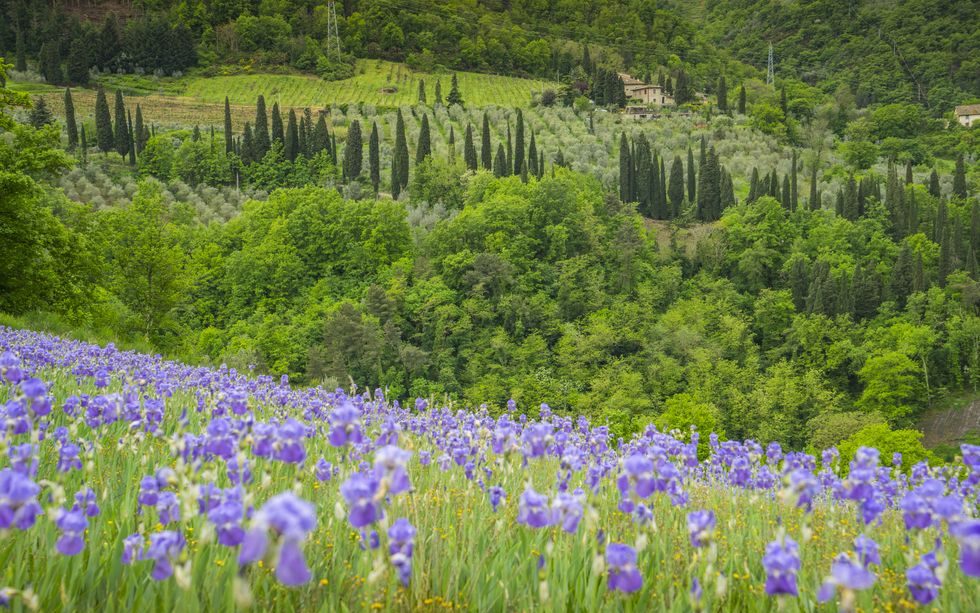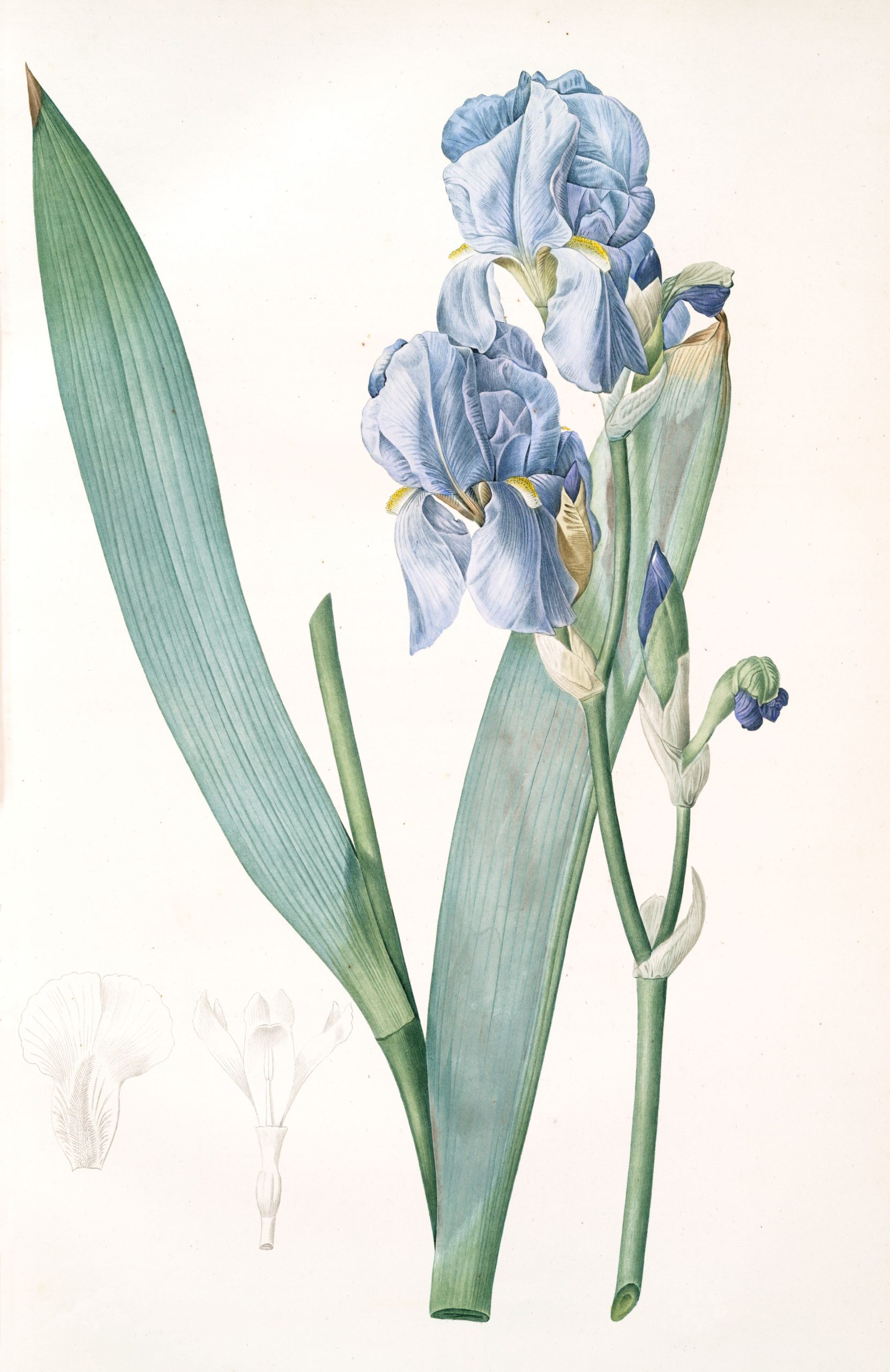Origin of scents
The use of iris in the world of perfumery: secrets of beauty and elegance
Iris, or blue gold as it is called in the world of perfumery, although elegant, iris reveals its magic only to the most patient people, making it one of the most valuable raw materials in perfumery. From its culture to its scent, discover all the secrets of making perfumes from iris flowers.

introduction
Iris is a rhizomatous plant native to the Far East and is currently grown in Italy, Morocco, and France. Its use as a scented substance goes back to the Renaissance era. At that time, they used to crush orris roots, then sift them and mix them with rice powder. The rice powder, which smells like an iris, was then used to perfume wigs, faces, and clothes as well.
Only in the twentieth century did perfume designers incorporate iris as an elegant and precious ingredient in their aromatic compounds.
There are also many types of iris, but in the world of perfumery, two types are grown: the palida, which is the most luxurious and grows on the slopes of the hills in Florence, Italy, and the Germanica, which is grown in Morocco. This type is considered less noble than the Italian iris, as it is easier to cultivate because it is more powerful. It requires less attention and has a shorter drying time.
Extracting perfumes from iris flower
Obtaining iris extract requires real knowledge and a certain amount of patience. It requires long-term care after planting. It takes at least 3 years for the aromatic compounds of the iris flower to develop in its rhizome (its trunk and underground roots), and after that, the odorless roots can be pulled out at this stage, cleaned, and cut into slices. The first cleaning task is long and tedious as it is only done by hand to protect the precious roots.
But patience is still required because the treatment of the iris is not over yet. It is now necessary to dry the roots for 3 days to get rid of more than half of their water and prevent them from rotting. After that, the roots are stored in jute bags for another 3 years. This is the time required to extract the iris scent molecules from the roots.
Finally, these roots are crushed and steam-distilled to obtain their concentrated extract. It may take one kilogram of orris extract to produce 13 tons of dried roots and six years of patience to obtain this aromatic ingredient, which is sold at exorbitant prices.
The secret of the scent of iris
But what makes perfumers go crazy over the smell of blue gold? You must understand that the scent of the iris consists of two aromatic principles: iron (the most expensive molecule and the main indicator of the quality of its extract) and myristic acid. Its note can be described as powdery with a slight touch of vanilla. The scent of the iris is strong and complex, and in perfumes, it is classified as woody and floral at the same time.
The history of the use of iris in perfumery
It is not known which adventurous gardener or curious perfumer first encountered this painstaking process, but it has been practiced for thousands of years. Pliny the Elder wrote about the use of orris root in medicine and perfumery in the first century AD, praising the Florentine source for its superiority. The royal patrons of Renaissance Italy almost certainly smelled the stuff. Catherine de Medici began her craze at the French court in the 16th century when she arrived from Florence with iris-scented gloves, and by the 17th century, the finely ground root was being used to soften laundry and powder wigs, a first prototype. – Dry shampoo. The flower itself is full of symbolism and takes its name from the Greek messenger of the gods. The iris, shaped like a fleur-de-lis, has been a symbol of French royalty since at least the 12th century.
Iris is used sparingly in perfumes, like a piece of caviar or a piece of gold leaf.
The ingredient is so multidimensional that it is almost indefinable – at once earthy, flowery, peppery, musky, fresh, and velvety. For Guillotin, it evokes “the body of a woman immediately after bathing”; Others describe it as smelling of earth, tea, and chocolate. “It adds a sense of luxury,” says Dior perfumer François Demachy. “It’s like the smell of bread. It makes you feel better.” “Iris is often considered powdery, and as a fragrance note it is classified as a floral fragrance,” says Shalini Kumar, who worked with famed nose Maurice Roussel on Iris Lumière. “However, the scent of iris butter is closer to the smell of green woods and damp roots. This moist quality The swamp-like appearance is magical and eerie. Iris is also unmistakably luxurious; it will dress up anything it touches. Sophie Labbe, the perfumer behind the iris, compares the transforming qualities of the iris to the facets of a gemstone.


